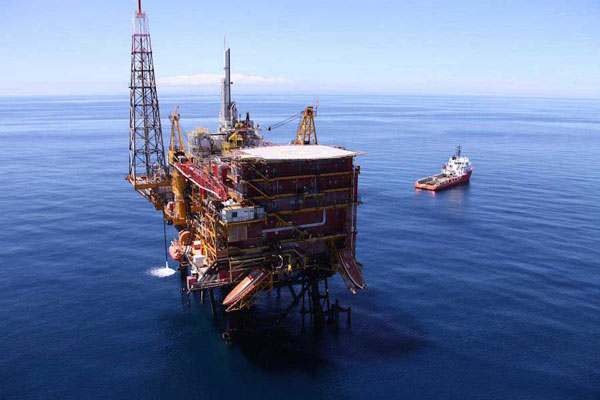Contents
Peregrino

Introduction
Located 80 kilometers off the coast of Rio de Janeiro state, the Peregrino oil field represents an ambitious heavy oil development by Brazilian state oil company Petrobras. The unique technical challenges faced at Peregrino provide insights into producing viscous offshore crude. This post takes a look at the history and current status of one of Brazil’s pioneering heavy oil projects.
Discovery and Early Development
The Peregrino heavy oil field was discovered by Petrobras in 1988 after drilling the 1-RJS-9A exploration well in block BC-60 of the Campos Basin. Initial assessments indicated an estimated 770 million barrels of heavy crude oil in place. However, developing the viscous oil deposit proved challenging.
After appraisal drilling throughout the 1990s, Peregrino was finally declared commercially viable in 2000. But development plans were postponed due to technical difficulties and Petrobras’ focus on other major offshore projects.
Planning for Peregrino restarted in 2005, with key contracts awarded to SBM and Aker Kvaerner. After fabrication, the Peregrino FPSO arrived at the field in 2010 with a production capacity of 100,000 barrels per day.
Drilling commenced in 2008 using the Stena Drillmax drillship for initial wells. This was followed by the Maersk Peregrino drillship which carried out an intensive campaign completing 24 production wells by 2015.
First oil was achieved in April 2011 through two wellhead platforms tied back to the FPSO. This marked the culmination of over 20 years of work to bring Peregrino into production.
Ramping up Production
With first oil achieved in 2011, Petrobras moved to ramp up output from the Peregrino field. Two wellhead platforms designated PNA-1 and PNA-2 were tied back to the FPSO Peregrino floating production unit.
An intensive drilling campaign was launched using the Maersk Peregrino drillship to complete numerous development wells. By mid-2012, the field was producing close to 100,000 barrels of heavy crude per day as projected.
However, reservoir challenges soon caused output to decline rapidly. To arrest falling production, Petrobras sanctioned an expansion of Peregrino known as Phase 2. This included the PNA-3 wellhead platform and over 30 additional production wells.
The PNA-3 platform came online in January 2015, boosting output back close to nameplate capacity. Further infill drilling continued over the next few years to optimize oil recovery.
Heavy crude is pumped from the wellhead platforms to the FPSO for processing and storage before being offloaded to shuttle tankers. During its peak, Peregrino accounted for over 10% of Brazil’s total oil production.
Maintaining Mature Output
Now over a decade since coming online, the Peregrino field is exhibiting signs of maturity with natural production declines setting in. Petrobras is implementing various efforts to maintain output and maximize recovery from the heavy oil reservoirs.
Post-plateau production is being sustained through continued well interventions, workovers, and facility upgrades. The company is looking to apply enhanced oil recovery techniques like water flooding to improve recovery rates.
Expanding use of artificial lift methods such as electrical submersible pumps helps counter reservoir pressure depletion. Operational efficiency gains and middling systems optimization also aid stable production.
While major new drilling is limited, Petrobras continues to study the reservoirs in detail to identify remaining pockets of oil. Further tie-ins from nearby fields may provide opportunities to boost Peregrino’s mature output.
Leveraging technology and its deep expertise, Petrobras is working to ensure Peregrino maintains a key role in contributing to Brazil’s oil production for years to come.
Operational Optimisation
Petrobras retains full operatorship and a 100% stake in the BM-C-60 concession containing the Peregrino field. While development has been costly, Peregrino provides significant expertise for Petrobras in offshore heavy oil production.
Operational management is focused on efficiency gains and minimizing costs. This includes optimizing pumping and water injection rates, reducing shut-downs, and monitoring output in real-time. Preventative maintenance routines help maximize facility uptime.
The company also heavily analyzes reservoir data to optimize well placements and fluid extraction. Peregrino served as a testing ground for many technological innovations Petrobras later applied across Brazil’s offshore fields.
Crude blending options are used to mix Peregrino’s heavy oil with lighter grades to achieve ideal export specifications. Petrobras also evaluates various enhanced oil recovery techniques tailored to the field’s geology to improve recovery factors.
While challenging, Peregrino has provided Petrobras with valuable learning opportunities to hone its deepwater operational capabilities. The field will remain a testing ground for innovative optimization approaches as it matures.
Conclusion
The Peregrino field represents an important milestone in Brazil’s quest to exploit its offshore heavy oil resources. While technically challenging, Petrobras has demonstrated success in safely producing heavy crude through advanced technologies. Peregrino will continue contributing oil volumes to Brazil through optimization efforts as the field matures.

